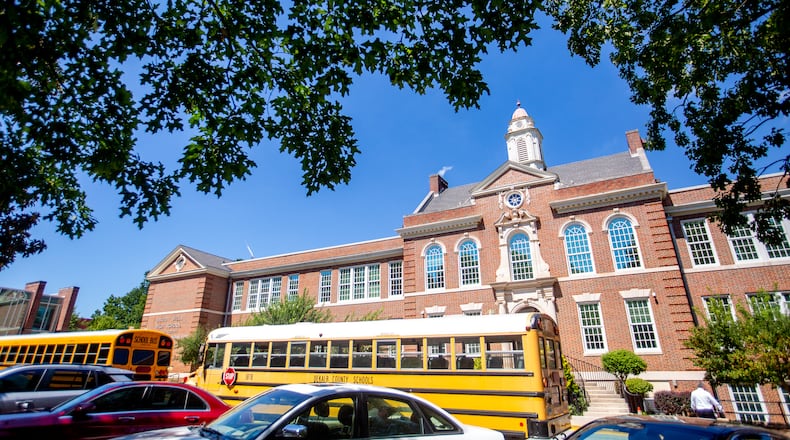The DeKalb County Board of Education approved an early plan for how to spend sales tax money over the next several years.
The list of upcoming projects includes four new schools, the renovation of Druid Hills High, upgrades to technology and security systems and fixes for schools’ most urgent needs. It includes something for every school, district staff explained at a special meeting Wednesday — something the board has long been requesting.
“I believe that this list has our district moving in the right direction,” said interim Superintendent Vasanne Tinsley.
The education special purpose local option sales tax, or E-SPLOST, funds capital improvements like new construction and technology upgrades. Voters in DeKalb have approved an additional penny sales tax every five years since 1997.
The district began collecting the most recent round of funds over the summer, but the board just formalized its plan for how to spend that money. The plan allocates $700 million, which is roughly how much the tax is expected to bring in by 2027.
The board’s unanimous vote caps off more than a year’s worth of facilities maintenance woes in the state’s third-largest district.
The district unveiled its comprehensive master plan in early 2022, which outlined major projects and initiatives to be completed over the next 10 years. The board had questions about the projects included in the plan, and opted not to move forward with the recommended modernization of Druid Hills High. Shortly after that, they also voted to focus on the district’s most urgent needs at all of its schools, rather than major updates outlined in the master plan. But between a change in superintendent and backlash from the community over the conditions at Druid Hills High, schools’ immediate needs became a focus for much of 2022.
The district’s new chief operating officer, Erick Hofstetter, said Wednesday that all of the needs previously identified when creating the comprehensive master plan have been addressed, or there’s a plan in place to correct them. The plan for spending incoming E-SPLOST money includes an estimated $69 million for addressing needs at schools with the poorest facilities.
“We are touching every school in some way, shape or form, to some level and to some degree, with E-SPLOST VI funding,” Hofstetter said.
Board members were pleased to approve the plan.
“Facilities are definitely a challenge that we have in this district, we’ll continue to have in this district,” said board member Whitney McGinniss. “This will not solve all our problems ... (but it) takes a bite out of some of, I think, the worst conditions we have.”
Some board members wanted to talk about the possibility of financing additional projects to address more needs in the district — but others emphasized the importance of taking baby steps.
“We are now finally touching every school. That’s a major, major step. So do we throw something else in there now while we’re trying to do that?” said board member Joyce Morley. “History does repeat itself, and at some point, I would like to see the DeKalb County School District learn from its mistakes.”
Where the money goes
The E-SPLOST VI funding list approved by the school board allocates an estimated $700 million. Here’s how most of the money will be divided up. For more specifics, click here.
- Major construction, $352 million: Includes construction of new Sequoyah Middle and Sequoyah High, construction of a new Dresden Elementary, land purchase and construction of new Cross Keys Middle, and modernization of Druid Hills High.
- Safety and security, $80 million: Includes updating security cameras, access controls, intrusion detection, and security vestibules in all schools, as well as updating fire alarm systems and disaster recovery systems.
- Equipment and information technology, $129 million: Includes “refresh” of IT infrastructure and devices, purchase and upgrades of new buses and vehicles, and updating communication infrastructure.
- Facility condition projects, $69 million: Includes upgrades to roofs or heating, ventilation and air conditioning systems at 17 schools with highest needs.
- Program management, $28 million
- Program contingency, $42 million
About the Author
Keep Reading
The Latest
Featured


